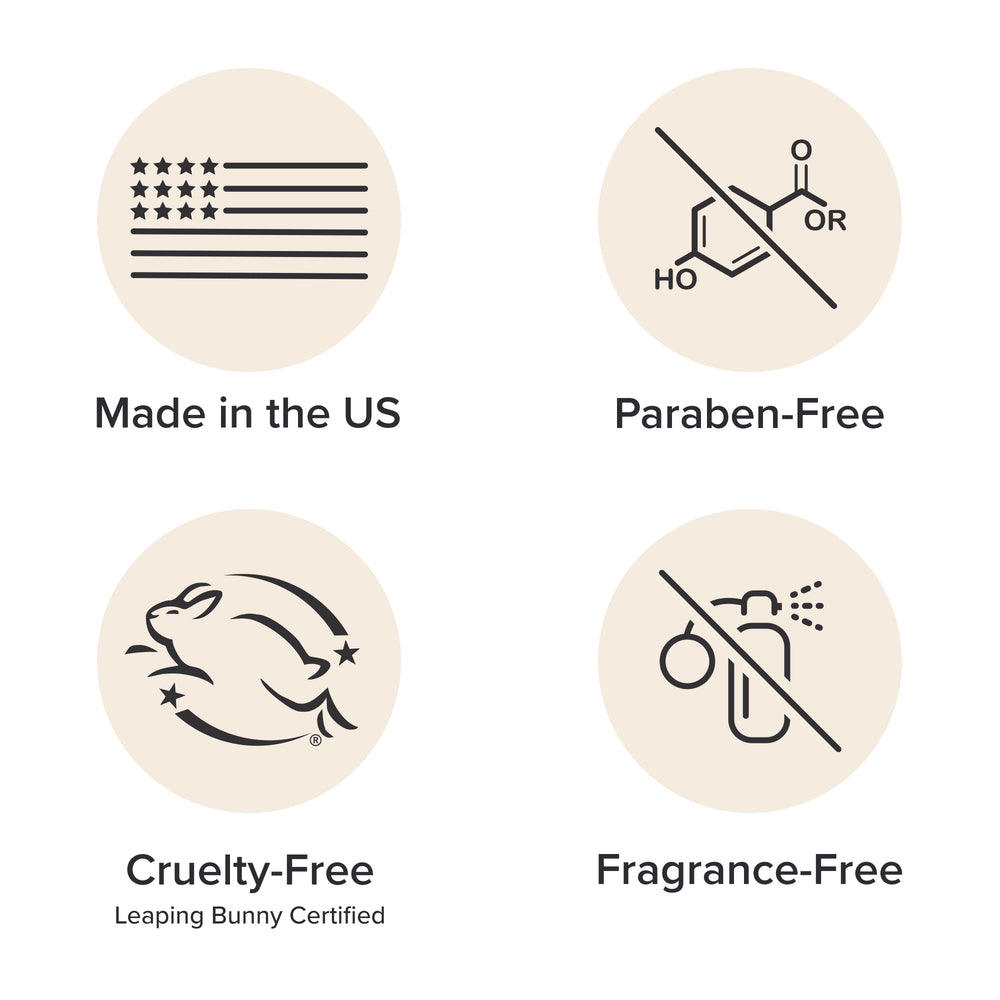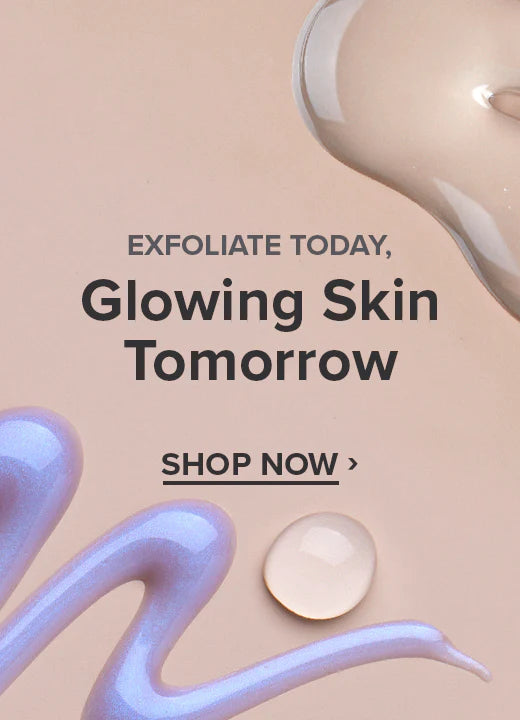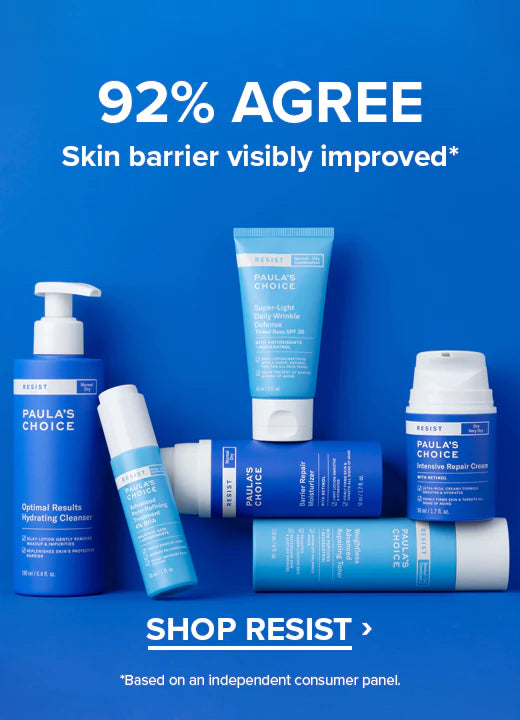How to Renew Aging Skin
Written by: Mercedes Santaella-Lam
More often than not, when we look in the mirror, many of us see rough, dry, uneven skin tone, dullness, red areas, and wrinkles. None of that is welcome, and if we could change some of it (or all of it), most people would love it.
This article shares the steps you can take now to renew and reinvigorate your skin’s appearance. With the right products and a commitment to a brilliant skin care routine, you can get and keep smoother, hydrated, younger-looking skin—really. We’ve seen the results in the mirror ourselves and we want you to see them on your skin!
Skin-renewing tip #1: Be diligent about sunscreen
Daily sunscreen application with a broad-spectrum moisturizer rated SPF 30 or greater should be at the top of your list. It’s the crucial first step in your mission to achieving a visibly younger and even skin tone that regains and maintains a youthful complexion that will stay with you for years to come.
Paula’s Choice Skincare moisturizing sunscreens are a vital part of our skin care routine because unprotected UV exposure is the #1 cause of virtually every sign of aging you don’t want to see.
If used as directed with other sun protection measures, this decreases the risk of skin cancer and early skin aging caused by sun.
We’re frequently asked about how much and how often to apply sunscreen (we admit, it can be confusing!); in response, see the following tips:
How often: SPF ratings are a measurement of the amount of time your skin can be exposed to UV light before it turns color, which is a visible signal of damage. If your skin turns color after 15 minutes of unprotected exposure, a sunscreen rated SPF 30 would protect you for 15 x 30, which is 450 minutes, or 7.5 hours. This does not count the time indoors when your skin isn’t exposed to UV light.
From the example above, applying SPF 30 liberally each morning will keep you protected for a normal workday (indoors) and the drive home.
If you will be outdoors all day and in direct sunlight (especially if you’re not wearing protective clothing, a hat, or sunglasses, and not seeking shade), you will have to reapply as indicated on the sunscreen’s label. We can’t do anything about this, sunscreens have limitations when skin is continuously exposed to sunlight.
Layer your protection: Your moisturizer with sunscreen can be worn under your foundation with sunscreen and your pressed powder with SPF or even a primer with sunscreen! Together, these will provide you with extra insurance against the unwanted effects of exposure to UV light.
Skin-renewing tip #2: Use an AHA or BHA exfoliant
We want to change how you think about exfoliating your skin because we want you to stop aggravating your skin with harsh scrubs that are abrasive and truly have a negative impact on skin. These scrubs are everywhere but most are just too rough on skin. Being gentle is paramount if you want to maintain healthy-looking skin.
That’s where a leave-on, exceptionally gentle AHA or BHA exfoliant comes in, to help your skin exfoliate imperceptibly and naturally, just like it did when you were young (of course, we’d love for you to consider one of our Paula’s Choice Skincare AHA or BHA exfoliants). Exfoliating with a leave-on exfoliant is one of the major skin care steps that really can seem to turn back the hands of time, virtually overnight.
Scrubs aren’t terrible for extra cleansing (assuming you use them very gently and they have soft beads as opposed to rough grains, shells, or ground-up nuts), but for exfoliating dead skin naturally, banishing dullness, and improving the look of pores, skin tone, and wrinkles, scrubs don’t hold a candle to the results you can get from a non-abrasive, leave-on exfoliant.
Note: AHA or BHA cleansers have limited ability to exfoliate skin because they are rinsed off before they can really have exfoliating benefits. AHA and BHA exfoliants work their magic when they are left on the skin overnight or during the day
Find out how to shop for an AHA or BHA exfoliant, and find the one that’s perfect for you with this handy guide on AHA & BHA exfoliants!
Skin-renewing tip #3: Use anti-aging ingredients
Be skeptical of trendy anti-aging ingredients that don’t have legitimate scientific research behind them proving their benefits when applied to skin.
Instead, recharge and nourish your skin’s appearance by using products loaded with the research-proven ingredients below that can slow the appearance of older-looking skin.
Stable antioxidants place themselves in between your skin and environmental attacks, halting the pro-aging damaging that UV rays, pollution and other external aggressors can cause. Tried and true antioxidants include vitamin C, which also helps fortify skin’s architecture and promote a firm look, resveratrol, green tea and grape extract.
Transformative skin-restoring ingredients tackle the appearance and feeling of aging through nourishing skin’s surface and sometimes, coaching skin to act younger. Star-studded skin-restoring ingredients include retinol, peptides and niacinamide.
Skin-replenishing ingredients are another great research-backed group of ingredients that assist in anti-aging through treating skin to much needed hydration. The hydration that these ingredients, like ceramides, provide boosts skin’s barrier and visibly plumps skin. Young skin contains many of these skin-replenishing ingredients, including hyaluronic acid, but as we age, we produce fewer and fewer of these much-needed goodies.
We are proud to say that these are exactly the types of ingredients we add to every Paula’s Choice Skincare toner, serum, moisturizer, and targeted solution, so that those with every skin type and concern have expertly formulated options to help their skin look renewed and beautifully even, day after day.
Some of our (and our customer’s) favorite skin-renewing products include:
- RESIST Barrier Repair Advanced Moisturizer: this silky lotion containing ceramides, tripeptide-5 and watermelon seed oil hydrates, restores skin’s barrier and helps protect skin’s collagen levels for firm, young-looking skin.
- RESIST Super Antioxidant Concentrate Serum: an antioxidant-rich serum that restores radiance and protects skin from pro-aging external attacks.
- CLINICAL 1% Retinol Treatment: a high-strength retinol solution that diminishes visible signs of aging while also soothing and hydrating.
- And of course, our AHA and BHA exfoliants mentioned above also have a key role in visibly renewing aging skin.
Skin-renewing rip #4: Avoid sensitizing ingredients
So far we’ve offered tips on what to use to revive skin from the look of advancing years, but this list wouldn’t be complete if we didn’t mention what to avoid. Lots of skin care products contain problematic ingredients research has shown pose a risk of causing a sensitized reaction.
Surprisingly, fragrance—both natural and synthetic—tops this list. A product that smells nice has strong nose appeal, but what makes your nose happy doesn’t always please your skin!
The same goes for products that contain denatured alcohol, lemon, citrus, eucalyptus, and witch hazel, to name a few. Yes, some people might say that such products are fine if “they don’t bother you,” but the sneaky thing about skin sensitization is that even if it’s not apparent to you (doesn’t hurt, doesn’t sting, doesn’t cause redness), it’s still causing cumulative problems, although silently.
You might even like how these ingredients cause a cool tingling sensation, making you think they’re working, but that sensation is actually your skin telling you it’s being bothered, not helped (men, we’re talking to you, too). You’ll be shocked at how quickly your skin will rebound once you stop using products that contain these troublesome ingredients!
Learn more about anti-aging.
References for this information:
Dermatology Research and Practice, February 2015, ePublication
JAMA Dermatology, February 2014, pages 154–163
Annals of Internal Medicine, June 2013, pages 781–790
Journal of the German Society of Dermatology, July 2012, pages 488–491
Dermatologic Therapy, May-June 2012, pages 252–259
Chemical Immunology and Allergy, March 2012, pages 77–80





